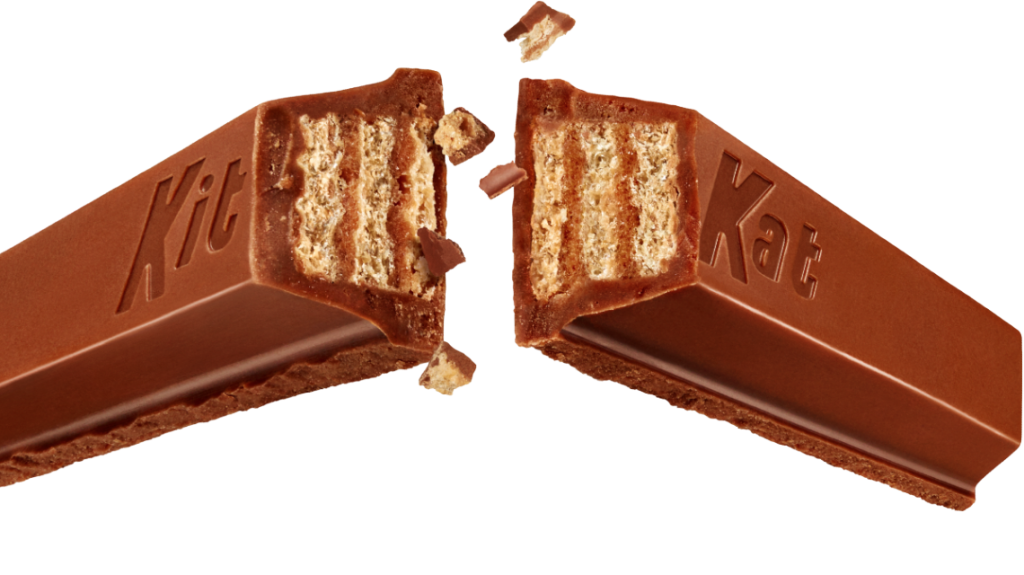The Recursive Candy Bar

Pictured above, snapped in half, is a Kit Kat bar. That’s probably not quite an accurate image — it’s from their official U.S. website, and therefore, likely highly edited. But it gives us a very good view of those crisp, distinct layers. Wikipedia, taking all the fun out of the candy bar, sums it up: “the standard bars consist of two or four pieces composed of three layers of wafer, separated and covered by an outer layer of chocolate.”
You knew that already, though. But you knew wrong — that’s only part of the story.
There are definitely three wafers in the standard Kit Kat. And they’re pretty generic wafers as candy bars go, made primarily of flour. The outer coating is chocolate — a mix of cocoa liquors and sugar. And originally, the layers between the wafters were, similarly, made of that chocolatey mix. But after a while, Nestle, who makes Kit Kats everywhere but in the United States, came up with an idea: they decided to recycle their defective Kit Kats.
Manufacturing isn’t a perfect process — sometimes, whatever comes off the production line isn’t fit for consumers. In the case of, say, car parts, that’s a big problem; you can’t put a defective brake pad on a car unless you want disaster to occur. In the case of defective Kit Kats, though, the problem is a packaging and aesthetic one. In general, a defective Kit Kat is going to taste roughly the same as a regular one, and in any event, it’s still perfectly edible. But we eat with our eyes to a large degree, so, oddly-shaped or otherwise non-standard Kit Kats don’t make their way to the candy counter.
Rather than throw out these unsaleable candy bars, Nestle (in the UK) and Hershey’s (in the U.S.) recycle them back into the Kit Kat production process. Mental Floss explains: “After being ground up into a fine paste, they form the filling you find between the Kit Kat’s wafers.” That’s a bit of an overstatement — a Nestle UK spokesperson told the Today Show that the “chocolayer” (that’s what they call it) has some of the recycled, rejected Kit Kats mixed together with the cocoa liquors and sugar used as the outer coating — it’s not all not-quite-Kit Kat.
But the overall point holds — there’s still Kit Kat in between the layers of your Kit Kat. As Food & Wine concludes, it goes on forever: “if you think about it, the imperfect Kit Kats were already filled with other imperfect Kit Kats, and some of the Kit Kats they’ll fill will also be rejected. Basically, every time you eat a Kit Kat you’re eating [ . . . ] layers of Kit Kats within Kit Kats within Kit Kats.”
Bonus fact: While you’ll find variants (especially in Japan), the standard Kit Kat flavor is milk chocolate. But during World War II, rations and shortages made it impossible for Rowntree’s, the confectionary behind the candy at the time, to produce milk chocolate Kit Kats. Instead, they switched to dark chocolate and created a blue wrapper to distinguish the two. But just to be on the safe side, Rowntree spelled out the recipe change on the wrapper itself. As seen here, it apologized, sharing that “because no milk can be obtained for chocolate manufacture, the Chocolate Crisp you knew in peace-time can no longer be made. Kit Kat is the nearest possible product at the present time.”
From the Archives: Why Reese’s Are Usually Taxed But Kit Kats Aren’t: The wafers, as noted above, contain flour. And for some reason, that matters to some taxing authorities.
